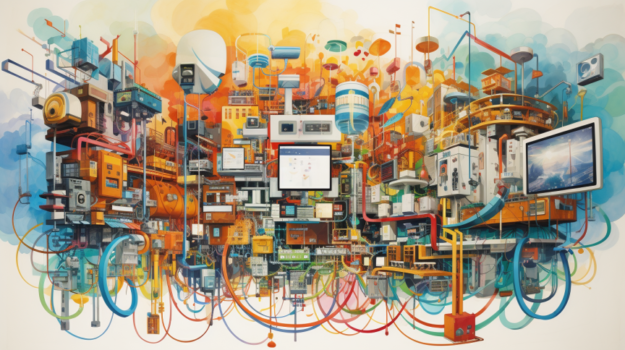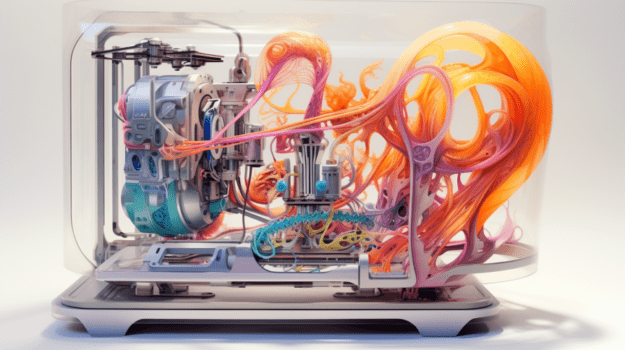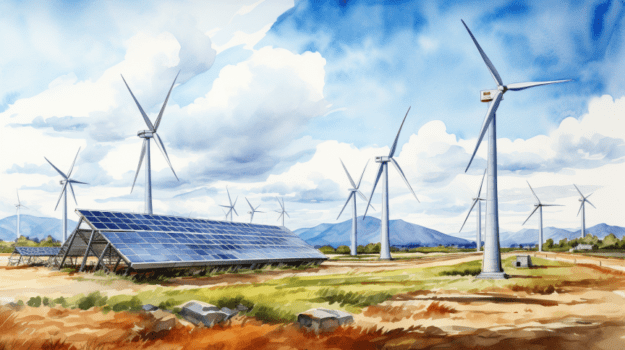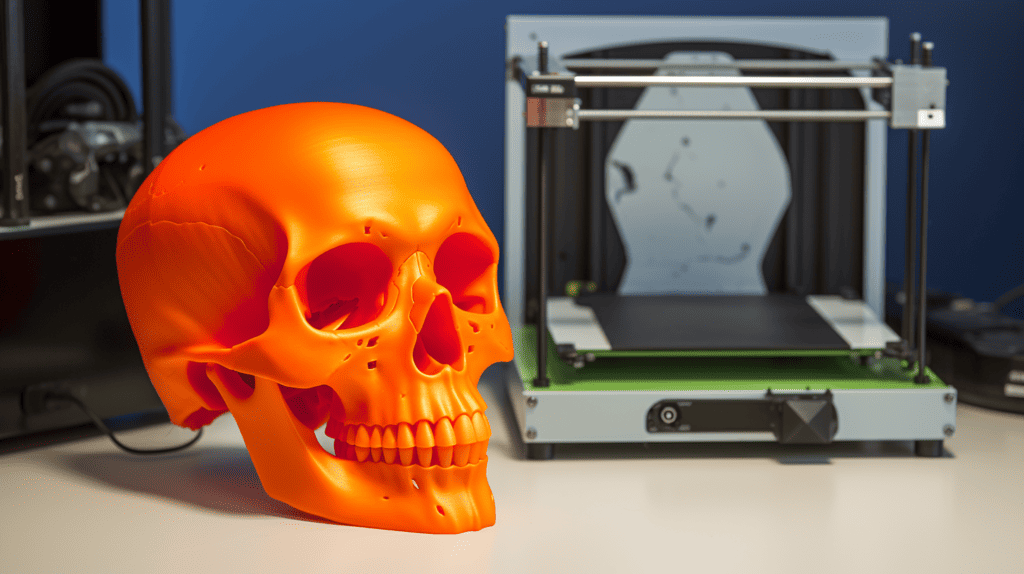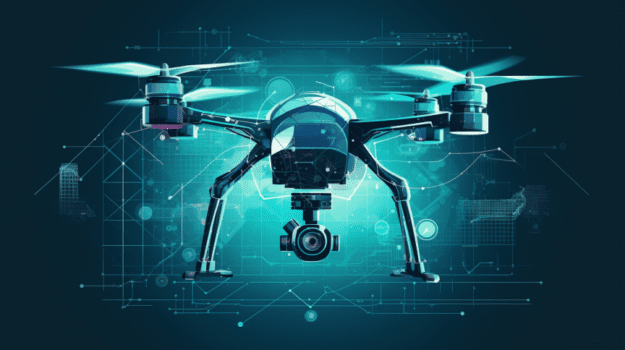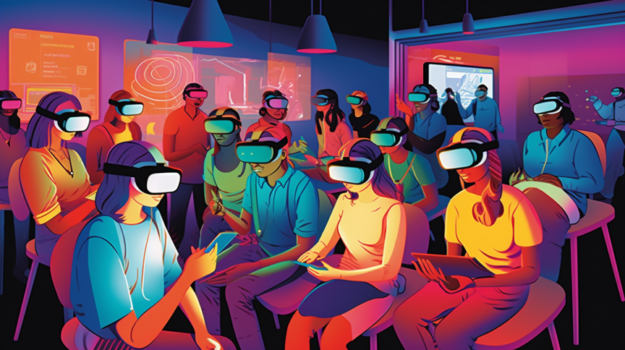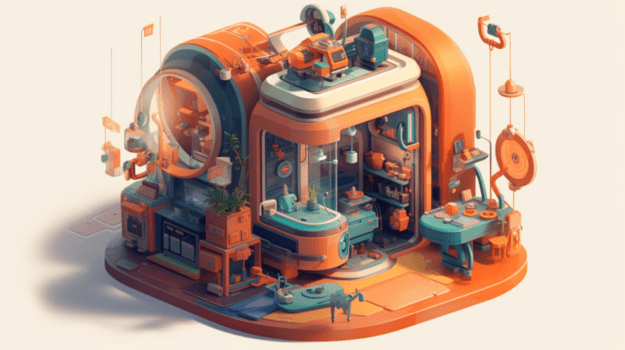Introduction to Emerging Technologies
The Role of Emerging Technologies in Shaping the Future
Emerging technologies have always played a significant role in shaping our world. From the invention of the wheel to the creation of the Internet, these advancements have revolutionized the way we live, work, and interact with one another. Today, the pace of technological breakthroughs is accelerating, and we are on the cusp of a new era of innovation. In this article, we will explore 10 emerging technologies that have the potential to transform various aspects of our lives and propel us into the future.
Understanding the Impact and Significance of Technological Advancements
Technological advancements have a profound impact on society. They drive progress, improve efficiency, and enhance our quality of life. As we continue to push the boundaries of science and engineering, emerging technologies are poised to redefine the way we live, work, and communicate. By understanding the significance of these advancements, we can better prepare for the changes they will bring and harness their potential to create a better future for all.
Artificial Intelligence: Transforming Industries and Beyond
AI-powered Automation: Reshaping Manufacturing and Labor
Artificial Intelligence (AI) is revolutionizing industries by automating tasks that were once performed by humans. With the ability to analyze vast amounts of data and learn from it, AI-powered systems can now perform complex operations with incredible precision and speed. In manufacturing, AI is driving efficiency by streamlining production processes and reducing errors. This technology is also reshaping the labor market, with some jobs being replaced by machines. However, new opportunities for human workers are emerging, as AI frees them from mundane tasks and creates space for creativity and innovation.
Reinventing Healthcare with AI: Improved Diagnostics and Treatment
AI is also making waves in the healthcare industry. By analyzing patient data and medical images, AI algorithms can assist doctors in making more accurate diagnoses and developing personalized treatment plans. This technology has the potential to vastly improve patient outcomes and reduce healthcare costs. Additionally, AI is being used to develop innovative medical devices and assistive technologies, enabling individuals with disabilities to lead more independent lives. The future of healthcare is being shaped by AI, with the promise of more precise and efficient care for all.
Blockchain: Revolutionizing Digital Transactions and Beyond
Understanding the Basics: How Blockchain Works
Blockchain technology is changing the way we perceive and engage in digital transactions. At its core, blockchain is a decentralized and transparent ledger that records transactions securely and permanently. This technology eliminates the need for intermediaries, such as banks or governments, and allows individuals to securely exchange digital assets directly. By leveraging cryptography and consensus algorithms, blockchain ensures the integrity and immutability of data, increasing trust and reducing fraud. The potential applications of blockchain extend beyond finance, with industries exploring its use in supply chain management, healthcare, and voting systems.
Securing Transactions and Creating Trust in the Digital World
One of the key benefits of blockchain technology is its ability to secure transactions and create trust in a digital environment. By using cryptographic algorithms, transactions recorded on the blockchain are tamper-proof and transparent. This creates a level of trust and accountability that was previously difficult to achieve in traditional systems. In addition, blockchain can enable faster and more cost-effective cross-border transactions, eliminating the need for intermediaries and reducing transaction fees. As this technology continues to evolve, we can expect to see a profound impact on various sectors, transforming the way we conduct business and interact online.
Internet of Things: A Connected Future
Thriving in a Connected World: Smart Homes and Cities
The Internet of Things (IoT) is revolutionizing the way we interact with our surroundings. With an ever-increasing number of devices connected to the internet, our homes and cities are becoming smarter and more efficient. In smart homes, IoT technology allows us to control and monitor appliances, lighting, and security systems remotely. This not only enhances convenience but also reduces energy consumption and improves safety. In smart cities, IoT sensors collect data on everything from traffic patterns to air quality, enabling better resource management and enhancing the overall quality of life for residents.
IoT in Healthcare: Enhanced Patient Monitoring and Preventive Care
In the healthcare industry, IoT is enabling a new era of patient monitoring and preventive care. Wearable devices equipped with sensors can collect real-time data on vital signs, allowing healthcare professionals to remotely monitor patients and detect early signs of illness or deterioration. This technology is particularly beneficial for patients with chronic conditions, as it empowers them to take control of their health and enables timely interventions. Furthermore, IoT devices can facilitate telemedicine, connecting patients with healthcare providers from the comfort of their homes, reducing the burden on healthcare facilities, and improving access to care, especially in remote areas.
3D Printing: Manufacturing the Unimaginable
Transforming Traditional Manufacturing Processes
3D printing, also known as additive manufacturing, has revolutionized traditional manufacturing processes. Unlike conventional manufacturing, which involves subtracting material to create a desired shape, 3D printing builds objects layer by layer using digital blueprints. This technology has opened up new possibilities for design, enabling the creation of intricate and complex structures that were previously impossible to manufacture. It has also reduced waste and production costs, as only the materials needed for the final product are used. From prosthetics to aerospace components, 3D printing is transforming various industries and democratizing access to manufacturing capabilities.
Unleashing Creative Possibilities: 3D Printing in Various Industries
The creative possibilities of 3D printing are virtually limitless. In architecture and design, this technology allows for the creation of intricate models and prototypes, enabling designers to visualize their concepts before construction begins. In the medical field, 3D printing is enabling the production of patient-specific implants and prosthetics, revolutionizing the field of personalized medicine. Moreover, the automotive and aerospace industries are leveraging 3D printing to manufacture lightweight and durable components, improving fuel efficiency and reducing environmental impact. As this technology continues to evolve, we can expect to see its application in an increasing number of industries, further transforming the way we manufacture and create.
Quantum Computing: The Power of Infinite Possibilities
Unveiling the Potential: Advancements in Quantum Computing
Quantum computing represents a paradigm shift in computational power. Unlike classical computers, which process information as binary digits (bits), quantum computers use quantum bits (qubits) that can exist in multiple states simultaneously. This allows quantum computers to perform complex calculations exponentially faster than classical computers. The potential applications of quantum computing are vast, from solving complex optimization problems to simulating molecular structures for drug discovery. Though still in its early stages, quantum computing holds the promise of revolutionizing various fields, including cryptography, materials science, and artificial intelligence.
Solving Complex Problems with Quantum Algorithms
Quantum algorithms have the potential to solve problems that are intractable for classical computers. One such example is Shor’s algorithm, which can factor large numbers efficiently, threatening the security of popular encryption schemes. By harnessing the power of quantum computing, we can develop new encryption methods that are resistant to quantum attacks. Quantum computers can also simulate quantum systems to unlock the mysteries of physics and chemistry, driving advancements in areas such as drug discovery and optimization of energy production. As scientists and engineers continue to develop and refine quantum computing technology, we are poised to uncover new solutions to some of the world’s most pressing challenges.
Renewable Energy: Shaping a Sustainable Future
Harnessing Solar Power: Advancements in Solar Energy
Renewable energy sources, such as solar power, are shaping a more sustainable future. Advancements in solar energy technology have made it more efficient and affordable, reducing our dependence on fossil fuels. Solar panels can now convert sunlight into electricity with higher efficiency, allowing for widespread adoption across residential, commercial, and industrial sectors. Moreover, the integration of solar energy with energy storage systems enables the generation and utilization of clean energy even during periods of low sunlight. By harnessing the power of the sun, we can significantly reduce our carbon footprint and mitigate the impacts of climate change.
The Rise of Wind Energy: Toward Clean and Green Power
Wind energy is another key player in the renewable energy revolution. Advancements in wind turbine technology have made harnessing wind power more efficient and cost-effective. Wind farms can now generate substantial amounts of electricity, providing a clean and sustainable alternative to fossil fuel-based power plants. As we continue to invest in wind energy infrastructure and research, we can expect further improvements in performance and a significant increase in global wind energy capacity. The rise of wind energy represents a crucial step toward achieving a greener and more sustainable future for generations to come.
Biotechnology: Innovations in Health and Beyond
Gene Editing: Transforming Treatment Possibilities
Biotechnology has revolutionized various fields, including healthcare. With the advent of gene editing technologies, such as CRISPR-Cas9, we can now modify the genetic material of living organisms with unprecedented precision and efficiency. Gene editing holds the promise of transforming treatment possibilities for genetic diseases, as well as improving crop yields and enhancing livestock productivity. By selectively modifying genes, we can potentially eradicate or mitigate the effects of hereditary conditions, ushering in a new era of personalized medicine and sustainable agriculture.
The Rise of Synthetic Biology: Designing Life Itself
Synthetic biology takes biotechnology to another level by designing and constructing biological systems from scratch. By leveraging genetic engineering techniques and bioinformatics, scientists can create artificial organisms with customized functionalities. This technology has immense potential in various areas, including pharmaceutical development, biofuel production, and environmental remediation. Synthetic biology can help us create more effective drugs, produce sustainable alternatives to fossil fuels, and clean up polluted environments. However, ethical considerations must be taken into account to ensure responsible use of this powerful technology and prevent unintended consequences.
Augmented Reality: Reimagining the Way We Interact
Enhancing User Experience: AR in Gaming and Entertainment
Augmented Reality (AR) is revolutionizing the way we interact with digital content and the physical world. By overlaying virtual elements onto the real environment, AR enhances user experiences in gaming and entertainment. From Pokémon Go to immersive virtual reality experiences, AR has transformed the way we play and consume media. This technology enables new forms of storytelling and engagement, blurring the lines between the digital and physical realms. As AR continues to evolve and become more accessible, we can expect an explosion of innovative applications in various industries, ranging from retail to education.
Augmented Reality in Education and Training
AR also holds great promise in the field of education and training. By overlaying virtual information and instructions onto the real world, AR can revolutionize the way we learn and acquire new skills. Students can visualize complex concepts, explore historical sites, and conduct virtual experiments, enhancing their understanding and engagement. In the workplace, AR can provide real-time guidance and assistance, improving efficiency and reducing errors. As AR technology becomes more advanced and widespread, it has the potential to democratize education and training, bridging gaps in access and expanding opportunities for learners around the world.
Robotics: Advancements in Automated Systems
Humanoid Robots: Pushing the Boundaries of Robotics
Robots are no longer confined to the pages of science fiction; they are quickly becoming a reality. Advancements in robotics have paved the way for the development of humanoid robots that mimic human movements and interactions. These sophisticated machines are capable of performing tasks that were once thought to require human intelligence and dexterity. From assisting in healthcare settings to exploring dangerous environments, humanoid robots are pushing the boundaries of what automation can achieve. While concerns about job displacement and ethical considerations arise, these robots have the potential to revolutionize industries and improve the quality of life for all.
Robotics in Everyday Life: Impact on Industries and Society
Robotic automation is already making a significant impact on industries and society as a whole. From manufacturing to agriculture, robots are streamlining processes and improving productivity. They can perform repetitive and physically demanding tasks with precision, reducing the risk of human error and injury. Additionally, robots can be deployed in areas that are inaccessible or hazardous to humans, such as deep-sea exploration or disaster response. While the widespread adoption of robotics raises questions about the future of work, it also opens up opportunities for humans to focus on more complex and creative tasks. As we continue to develop and integrate robotics into our daily lives, we must carefully consider the social and economic implications and ensure responsible and equitable implementation.
Nanotechnology: The Science of Small Wonders
Nanomaterials: Revolutionizing Medicine and Electronics
Nanotechnology, the science of manipulating matter at the nanoscale, holds immense potential in various fields, including medicine and electronics. By manipulating atoms and molecules, scientists can create materials with unique properties and functionalities. In medicine, nanomaterials can revolutionize drug delivery systems, enabling targeted therapies and reducing side effects. They can also be used in diagnostic tools to detect diseases at an early stage. In electronics, nanotechnology is advancing the development of smaller and more efficient components, paving the way for faster and more powerful computing devices. While the full potential and implications of nanotechnology are still being explored, it is clear that this field will play a significant role in shaping our future.
Environmental Impact of Nanotechnology
While nanotechnology offers immense potential, it is essential to consider its environmental impact. The production and disposal of nanomaterials can have unintended consequences on ecosystems and human health. As nanotechnology continues to evolve, it is crucial to develop sustainable manufacturing processes and assess the potential risks associated with the use of nanomaterials. By adopting responsible and environmentally conscious practices, we can harness the power of nanotechnology while minimizing its negative effects on the planet.
Summary: The Future We Can Shape
Recapitulating the Key Emerging Technologies
In this article, we have explored 10 emerging technologies that have the potential to revolutionize our future. From artificial intelligence and blockchain to renewable energy and nanotechnology, these advancements are reshaping industries, enhancing our quality of life, and addressing some of the world’s most pressing challenges. By understanding the impact and significance of these technologies, we can actively participate in shaping a future that benefits all of humanity.
The Power of Collaboration and Ethical Implementation
As these emerging technologies continue to evolve and proliferate, collaboration and ethical implementation will be crucial. It is essential for scientists, engineers, policymakers, and society as a whole to work together to ensure that these technologies are deployed responsibly and in a way that maximizes their benefits while mitigating their risks. By fostering a culture of innovation, collaboration, and ethical decision-making, we can harness the full potential of these technologies to create a better and more equitable future.
FAQs: Unveiling the Mysteries of Emerging Technologies
Which emerging technology has the most significant potential?
While all the emerging technologies discussed in this article have significant potential, it is challenging to determine which one holds the most promise. Each technology has its unique applications and implications, and their potential impact depends on various factors, including technological advancements, regulatory frameworks, and societal acceptance.
What challenges do these technologies face in wider adoption?
The wider adoption of emerging technologies faces several challenges. These challenges include technological limitations, high costs of implementation, regulatory barriers, ethical considerations, and societal acceptance. Overcoming these challenges will require collaboration between stakeholders, continuous research and development, and the establishment of supportive policies and frameworks.
Are there any ethical concerns associated with these technologies?
Yes, there are ethical concerns associated with emerging technologies. For example, the use of AI raises questions about privacy, bias, and the impact on employment. The implementation of gene editing technologies prompts discussions about the ethics of modifying the human genome. It is crucial to address these ethical concerns through open dialogues, robust ethical frameworks, and responsible decision-making to ensure that these technologies are used for the betterment of humanity.
How quickly can we expect these technologies to revolutionize the world?
The speed at which these technologies will revolutionize the world varies. Some technologies, such as AI and renewable energy, are already making significant impacts and will continue to evolve rapidly. Others, such as quantum computing and synthetic biology, are still in their early stages of development and may take more time to reach their full potential. However, given the rate of technological advancement and the increasing global focus on innovation, we can expect these technologies to continue to shape our world in the coming years and decades.





